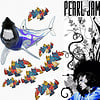Boston Red Sox
Comments
-
force-10 wrote:lester´s hit two batters already? That dude is out of control. And we desperately need him to pitch real good. Especially this series.
of course...all they do is hit us
skanksi post on the board of a band that doesn't exsist anymore .......i need my head examined.......0 -
Jeter DH?
Posada such a flower girl, he doesn´t want to DH. Is that what it has come down to at the yankee clubhouse?IN THE DARK, ALL CATS ARE BLACK.0 -
Hey JIMED!!!
What were we posting about?
Y no, no no no no no!!!!! diganle que no a esa pelota!!!!!!
Big papi 2 run homer!!IN THE DARK, ALL CATS ARE BLACK.0 -
He's played first in the past.force-10 wrote:Jeter DH?
Posada such a flower girl, he doesn´t want to DH. Is that what it has come down to at the yankee clubhouse?Shows: 6.27.08 Hartford, CT/5.15.10 Hartford, CT/6.18.2011 Hartford, CT (EV Solo)/10.19.13 Brooklyn/10.25.13 Hartford
"Becoming a Bruce fan is like hitting puberty as a musical fan. It's inevitable." - dcfaithful0 -
-
force-10 wrote:
And Boston started the game with the brother of a pedophile at second. Go figure.
Too personal? yeah, too personal. Apologies.0 -
Give him time some fielding rest and get the younger players some innings played.force-10 wrote:Shows: 6.27.08 Hartford, CT/5.15.10 Hartford, CT/6.18.2011 Hartford, CT (EV Solo)/10.19.13 Brooklyn/10.25.13 Hartford
"Becoming a Bruce fan is like hitting puberty as a musical fan. It's inevitable." - dcfaithful0 -
Newch91 wrote:Give him time some fielding rest and get the younger players some innings played.
Or just give him a breather so he can play all 10 home games and try and get 3,000 at home.0 -
6-3 now. Damn! Posada turned out better than whats his face.IN THE DARK, ALL CATS ARE BLACK.0
-
Am I the only one hoping the Red Sox score about 12 runs in the top of the ninth so there is no chance Papelbon comes into this game?"You're one of the few Red Sox fans I don't mind." - Newch91
"I don't believe in damn curses. Wake up the damn Bambino and have me face him. Maybe I'll drill him in the ass." --- Pedro Martinez0 -
Third out at third0
-
Damn!!!! We are up three. Jacoby should have stayed at 2nd base!!!!!!IN THE DARK, ALL CATS ARE BLACK.0
-
There you go Jimed, that game brought him up to a 4.32 ERA.0
-
Shit! A walk with no out! These games are (almost) ALWAYS so close.IN THE DARK, ALL CATS ARE BLACK.0
-
force-10 wrote:Shit! A walk with no out! These games are (almost) ALWAYS so close.
Funny thing is, I feel like this game is 94-0 but the Yanks still somehow have a chance.0 -
Cliffy6745 wrote:force-10 wrote:Shit! A walk with no out! These games are (almost) ALWAYS so close.
Funny thing is, I feel like this game is 94-0 but the Yanks still somehow have a chance.
You know what? I always have that same feeling myself! Seriously.IN THE DARK, ALL CATS ARE BLACK.0 -
Cliffy6745 wrote:There you go Jimed, that game brought him up to a 4.32 ERA.
On the boston broadcast, they stated his save situation, ERA = 2.15"You're one of the few Red Sox fans I don't mind." - Newch91
"I don't believe in damn curses. Wake up the damn Bambino and have me face him. Maybe I'll drill him in the ass." --- Pedro Martinez0 -
A-rod coming up short when it matters most.
It does not get old."You're one of the few Red Sox fans I don't mind." - Newch91
"I don't believe in damn curses. Wake up the damn Bambino and have me face him. Maybe I'll drill him in the ass." --- Pedro Martinez0
Categories
- All Categories
- 149.1K Pearl Jam's Music and Activism
- 110.2K The Porch
- 283 Vitalogy
- 35.1K Given To Fly (live)
- 3.5K Words and Music...Communication
- 39.3K Flea Market
- 39.3K Lost Dogs
- 58.7K Not Pearl Jam's Music
- 10.6K Musicians and Gearheads
- 29.1K Other Music
- 17.8K Poetry, Prose, Music & Art
- 1.1K The Art Wall
- 56.8K Non-Pearl Jam Discussion
- 22.2K A Moving Train
- 31.7K All Encompassing Trip
- 2.9K Technical Stuff and Help




